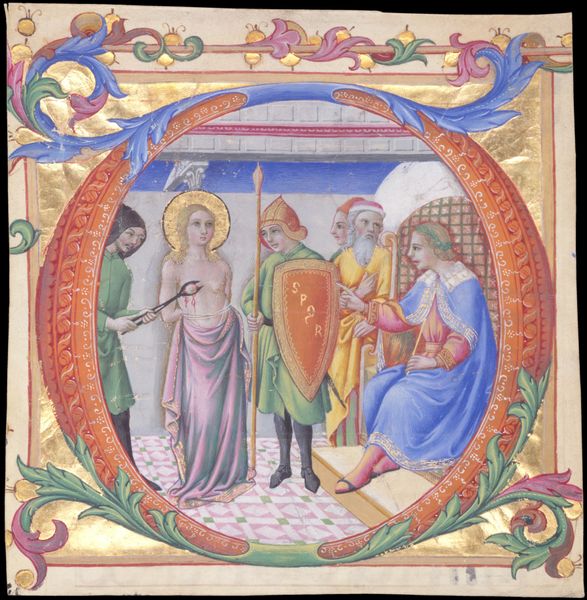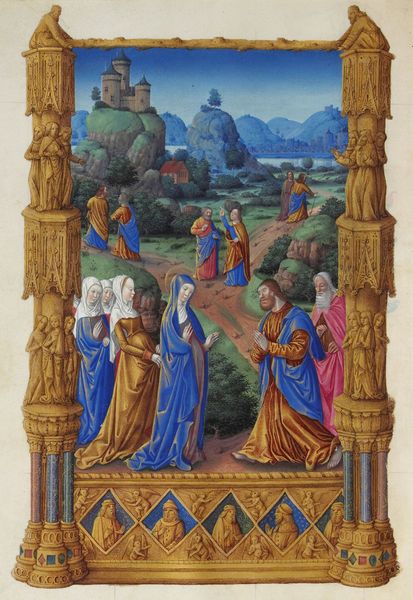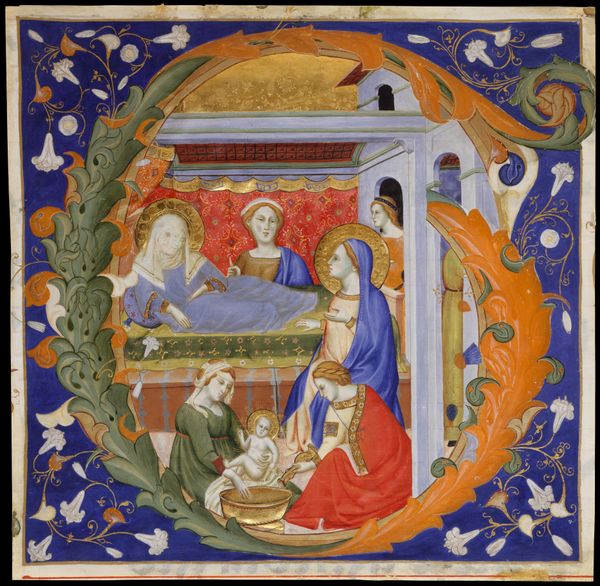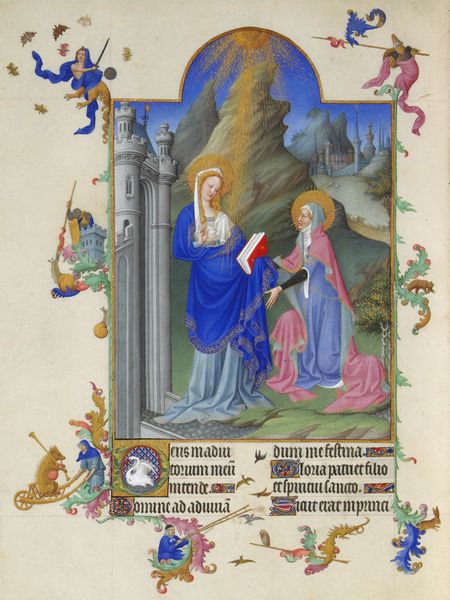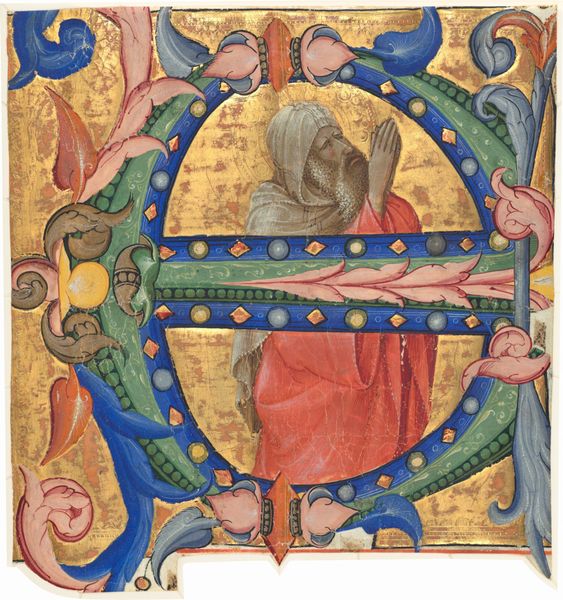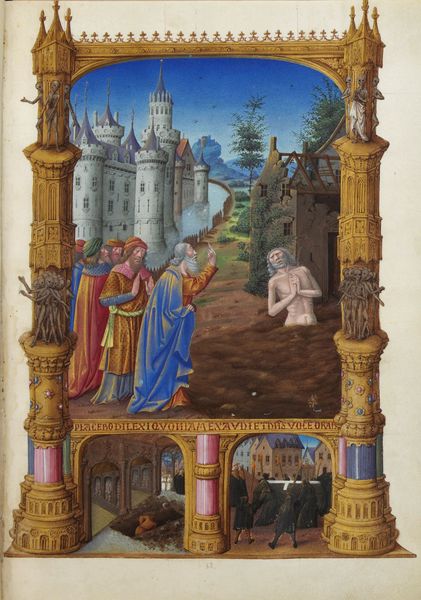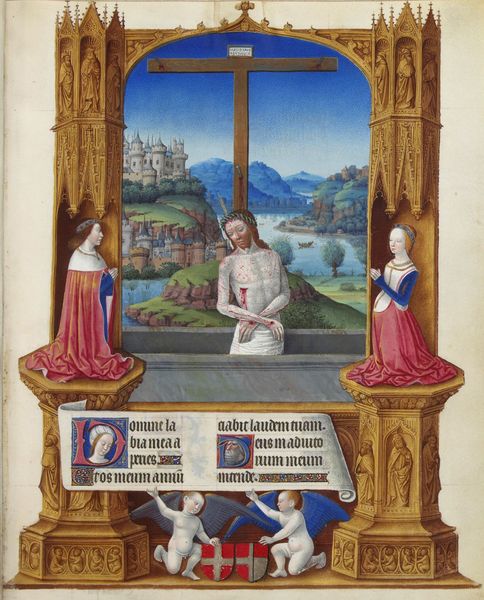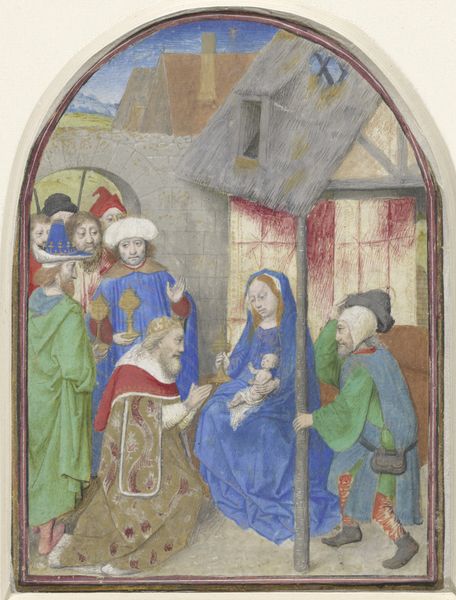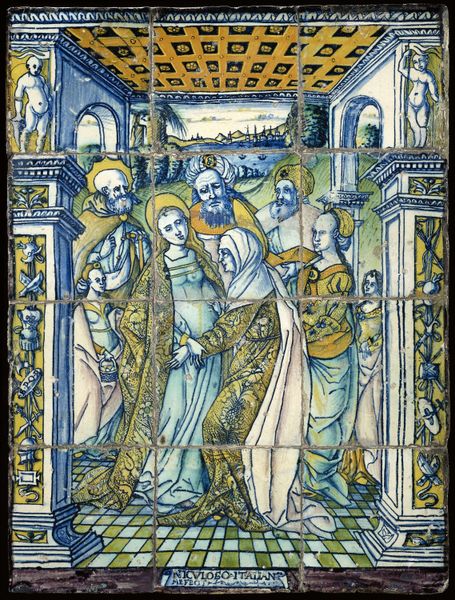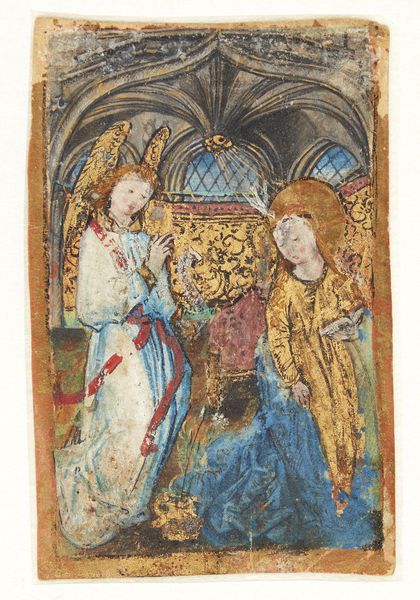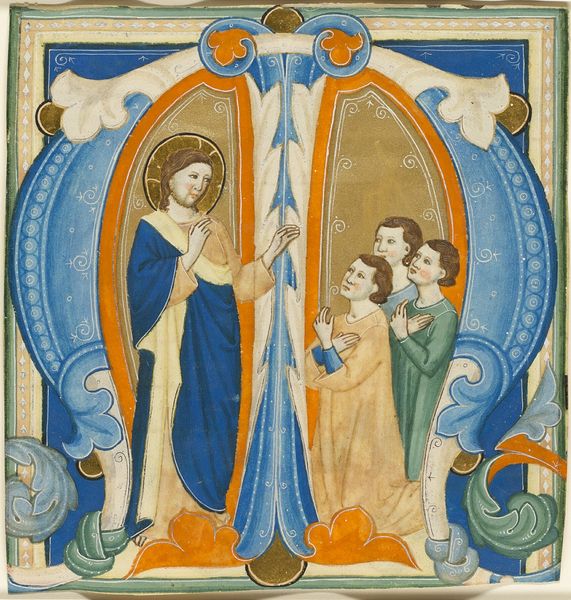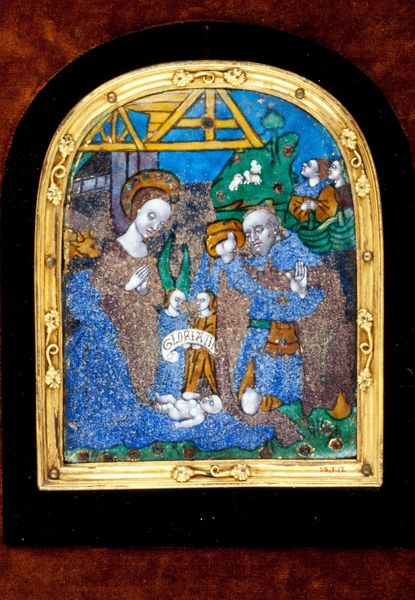
Manuscript Illumination with the Holy Women at the Tomb in an Initial A, from an Antiphonary 1490 - 1500
0:00
0:00
watercolor
#
narrative-art
#
figuration
#
watercolor
#
history-painting
#
medieval-art
#
watercolor
Dimensions: Overall: 8 15/16 x 6 1/4 in. (22.7 x 15.9 cm) Illumination: 5 15/16 x 5 9/16 in. (15.1 x 14.2 cm) Mat size: 19 1/4 x 14 1/4 in. (48.9 x 36.2 cm)
Copyright: Public Domain
Curator: Today we're examining a page from an illuminated antiphonary, "Manuscript Illumination with the Holy Women at the Tomb in an Initial A," created around 1490 to 1500 by Girolamo dai Libri. Editor: My immediate reaction is one of hopeful stillness. The light emanating from the angel contrasts so starkly with the dark, cavernous tomb. It suggests an awakening. Curator: Note the careful composition; the initial 'A' isn’t just decorative. See how its form enframes the scene, guiding our eye through the narrative. The gilded leaf further emphasizes this visual pathway, directing us to the event’s key figures. Editor: Absolutely, and thinking about it historically, this illumination visualizes a turning point, literally. The story of the women finding the empty tomb challenged patriarchal religious structures of the time by prioritizing female witness. What agency did they have in spreading this subversive gospel? Curator: Let’s not overlook the skillful execution, either. The watercolor medium allows for a subtle modulation of light and shadow, adding a delicate touch to the scene's dramatic weight. Editor: While I agree that the artistry is remarkable, the softness and pastel color choices aestheticize what was probably a traumatic and life-changing experience for the women, blunting the overall emotional force of their encounter. How do visual conventions temper revolutionary messages? Curator: It's a dance of balance, isn't it? The illuminator sought to ennoble the image through artistry, conveying the gravitas of the Biblical moment, perhaps more so than rendering a purely emotional portrayal. Editor: I see it also functioning as propaganda. Who commissioned it? Who was this lavish manuscript created for and how were their beliefs bolstered and reinforced by these narrative choices? Curator: I think that the piece remains powerful despite those contradictions, sparking fascinating conversations about both artistic expression and religious ideology. Editor: Yes, it is in holding that tension that the piece truly thrives, inviting us to reconsider familiar stories through both aesthetic appreciation and critical investigation.
Comments
No comments
Be the first to comment and join the conversation on the ultimate creative platform.
